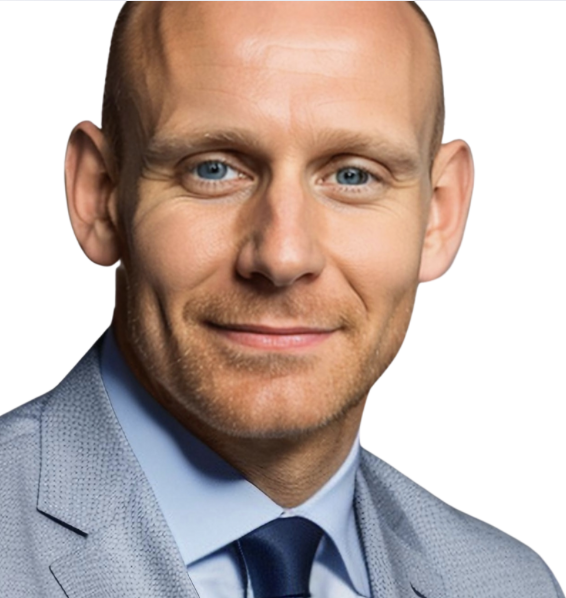Seventy percent of senior executives report experiencing burnout, according to Korn Ferry, and the ripple effects are staggering. Turnover, disengagement, and cultural erosion are just the tip of the iceberg. While much attention has been given to addressing employee well-being, the unique challenges faced by high-performing leaders remain a largely unspoken crisis. These are the individuals tasked with steering organizations through complexity and uncertainty, yet many are running on empty.
The irony is profound: leaders, the linchpins of organizational success, are often the ones most at risk of burnout. Outdated cultural norms equating resilience with endurance persist, leaving little room for these individuals to prioritize their own well-being. This leadership well-being gap isn’t just a personal issue; it’s a systemic challenge with far-reaching consequences for organizations.
But there is hope. HR professionals are uniquely positioned to address this crisis. By adopting proactive, strategic approaches to leadership well-being, HR can transform not just individual lives, but entire organizational cultures. This article explores why the leadership well-being gap persists, the cost of inaction, and practical strategies to close the gap – including insights from a holistic framework proven to drive results.
The Leadership Well-Being Gap – A Hidden Crisis
The leadership well-being gap refers to the disconnect between the demands placed on senior leaders and the systemic support they receive. High-performing leaders operate in a high-stakes environment that requires constant availability, rapid decision-making, and the ability to inspire others. However, these same pressures often leave them isolated, overworked, and undervalued.
Why This Matters
Unchecked leadership burnout has profound implications:
- Turnover at the Top: SHRM reports that replacing a senior leader can cost up to two times their annual salary. Beyond financial losses, turnover disrupts teams and erodes institutional knowledge.
- Ripple Effects on Teams: Burned-out leaders are less likely to inspire their teams. Gallup estimates that disengaged employees cost the global economy $8.8 trillion annually.
- Erosion of Culture: A culture of endurance trickles down. Employees mirror their leaders, perpetuating cycles of overwork and burnout.
Despite growing awareness of these issues, many organizations still prioritize short-term output over long-term sustainability. The result? A crisis that undermines both leaders and the organizations they serve.
Why HR Must Lead the Charge
HR professionals are the architects of workplace culture, making them uniquely equipped to close the leadership well-being gap. Here’s why HR’s role is critical:
- Strategic Oversight: HR bridges the gap between individual leaders and organizational systems, ensuring well-being initiatives align with business objectives.
- Influence on Culture: By championing holistic approaches to well-being, HR can challenge outdated norms and foster a culture of sustainability.
- Impact on Retention: Proactively addressing leadership burnout reduces turnover and strengthens the leadership pipeline.
Closing the gap requires HR to rethink resilience – not as an individual trait, but as a systemic priority embedded into the organization’s DNA.
Practical HR Strategies to Close the Gap
Build Flexibility into Leadership Roles
Flexibility is no longer a perk; it’s a strategic necessity. Rigid structures contribute to burnout, whereas flexible policies empower leaders to manage their workloads sustainably.
Case Study: Dell Technologies has embraced flexible work policies, allowing employees to design their schedules around personal and professional needs. This approach has boosted morale, retention, and productivity while saving the company $12 million annually in overhead costs.
Invest in Leadership Development
Leadership resilience begins with development programs that equip leaders to navigate pressure while maintaining their well-being.
Barclays’ Emerging Leaders Programme
Barclays identified that while their managers exhibited strong technical performance, there was a need to enhance their leadership capabilities to prepare them for promotion. To address this, Barclays partnered with Impact International to develop the Emerging Leaders Programme. This initiative focused on:
- Leadership Action: Empowering managers to take decisive actions that yield results.
- Self and Team Management: Enhancing personal effectiveness and the ability to build, lead, and coach teams.
- Personal Development: Encouraging ownership of one’s growth and development.
The programme combined challenging and innovative experiential learning modules, supported internally by senior sponsorship, workplace mentoring, personal development reviews, and online resources. As a result, participants demonstrated increased leadership capabilities, positioning them for advancement within the organization.
Holistic Well-Being in Action: The S.E.N.S.E. Framework
A holistic approach is essential to closing the well-being gap. The S.E.N.S.E. framework (Sleep, Exercise, Nutrition, Stress Management, Executive Coaching) offers a multi-faceted strategy tailored to the unique needs of leaders.
Insights from the Field:
- Sleep: Leaders who prioritize adequate rest experience a 58% improvement in focus and a 44% increase in decision-making accuracy, according to a study published in Nature and Science of Sleep. Chronic sleep deprivation, on the other hand, is linked to impaired judgment and decreased productivity, underscoring the critical role of restorative sleep.
- Exercise: Regular physical activity stress hormones while boosting endorphin levels, enhancing mental clarity and emotional resilience. Research from the American Psychological Association shows that 89% of individuals who engage in moderate exercise report improved mood and focus at work.
- Nutrition: A balanced diet supports overall health, sustained energy levels, and cognitive performance. Harvard Health emphasizes that diets high in vegetables, lean proteins, and healthy fats reduce fatigue and improve workplace efficiency, particularly in demanding roles.
- Stress Management: Mindfulness practices and cognitive reframing techniques reduce workplace stress by up to 32%, as reported in a study by the Journal of Occupational Health Psychology. Leaders trained in these methods handle pressure effectively and demonstrate enhanced better crisis management skills.
- Executive Coaching: Personalized coaching leads to measurable improvements in leadership effectiveness, with a study by the International Coaching Federation showing that 86% of coaching clients report a positive ROI for their organizations. Coaching provides leaders with actionable strategies to address blind spots and foster long-term success.
In my work with senior leaders, integrating the S.E.N.S.E. framework has consistently resulted in better work-life balance, improved team engagement, and productivity outcomes.
Measure Well-Being as a Core Metric
What gets measured gets managed. By tracking metrics like burnout levels, resilience scores, and engagement rates, HR can identify gaps and refine strategies.
Case Study: Salesforce’s use of resilience surveys and burnout audits has enabled the company to address systemic issues before they escalate, driving continuous improvement and fostering a culture of well-being.
The Vision for Thriving Leaders and Organizations
Imagine a workplace where leaders inspire with energy and clarity, teams innovate with enthusiasm, and cultures thrive under sustainable practices. By embedding well-being into leadership strategies, organizations can:
- Strengthen retention and engagement.
- Foster innovation and creativity.
- Drive long-term performance and profitability.
HR professionals hold the key to this transformation. By closing the leadership well-being gap, they can create organizations where both people and profits thrive.
The Well-Being Wake-Up Call
The leadership well-being gap is a crisis, but it’s also an opportunity. By embracing holistic strategies like flexibility, leadership development, and frameworks such as S.E.N.S.E., HR professionals can redefine resilience and empower leaders to succeed sustainably.
The question is not whether organizations can afford to address this issue – it’s whether they can afford not to. Let’s close the gap and build a future where thriving leaders create thriving organizations.









